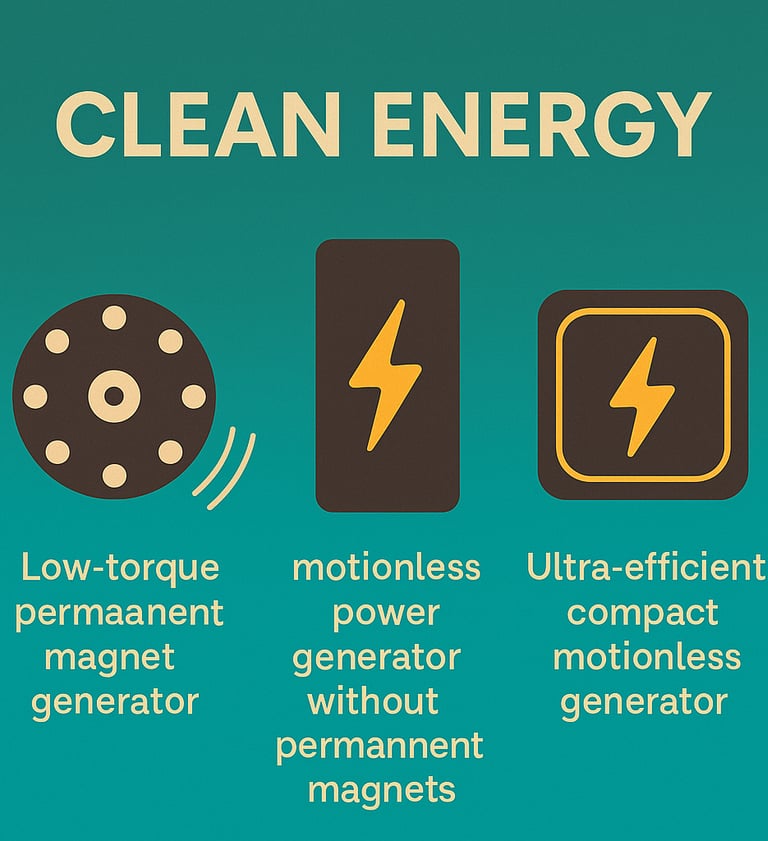Overview
Clean Energy initiative is a suite of breakthrough power generation technologies aimed at redefining how we harness and distribute energy. This multi version project combines open-source innovation, motionless energy systems, and ultra-efficient compact designs to drive global sustainability.
Our Technology Versions
Clean Energy V1: Low Torque Permanent Magnet Generator
Status: Open Source View on GitHub
Description:
A compact, low-torque permanent magnet generator designed for continuous and efficient power generation in various applications including mobility and microgrids.Features:
Operates at very low torque
Ideal for wind, pedal, and other low-speed input systems
Open designs + benchmark testing to be released in the coming month
Clean Energy V2: Motionless Power Generator (No Magnets)
Status: In Development
Description:
A novel energy generation system with no moving parts and no permanent magnets, making it ultra-durable and virtually maintenance-free.Benefits:
Zero torque losses
Lower manufacturing costs
No rare-earth magnet dependency
Clean Energy V3: Ultra-Efficient Compact Motionless Generator
Status: Concept / Prototype
Description:
This version aims to deliver maximum energy output in minimal space, with potential use in remote, embedded, or mobile applications.Innovation Goals:
Extreme energy density
Minimal heat loss
Portable & scalable form factor
Applications in Development
Smart microgrids
Sustainable homes
Embedded systems (IoT devices, sensors)
Emergency power units
Clean Mobility integration
Solutions in Development
Leveraging the innovations from our open-source Clean Energy technology — especially Clean Energy V1: Low Torque Permanent Magnet Generator — we’re actively building real-world solutions that redefine how power is generated and used across sectors.
On-the-Go Charging for Electric Vehicles
A breakthrough solution enabling continuous EV charging through motion-based energy recovery.
Utilizes airflow and vehicle motion to generate power in real-time.
Integrates seamlessly with electric bikes, cars, trucks, and buses.
Significantly reduces dependency on charging infrastructure.
Based on Clean Energy V1 (view source on GitHub).
Collaborate or Contribute
We're welcoming developers, researchers, and clean tech enthusiasts to collaborate on open-source energy innovation.
👉 Join us on GitHub | Contact: sateesh.peetha@dhope.org


